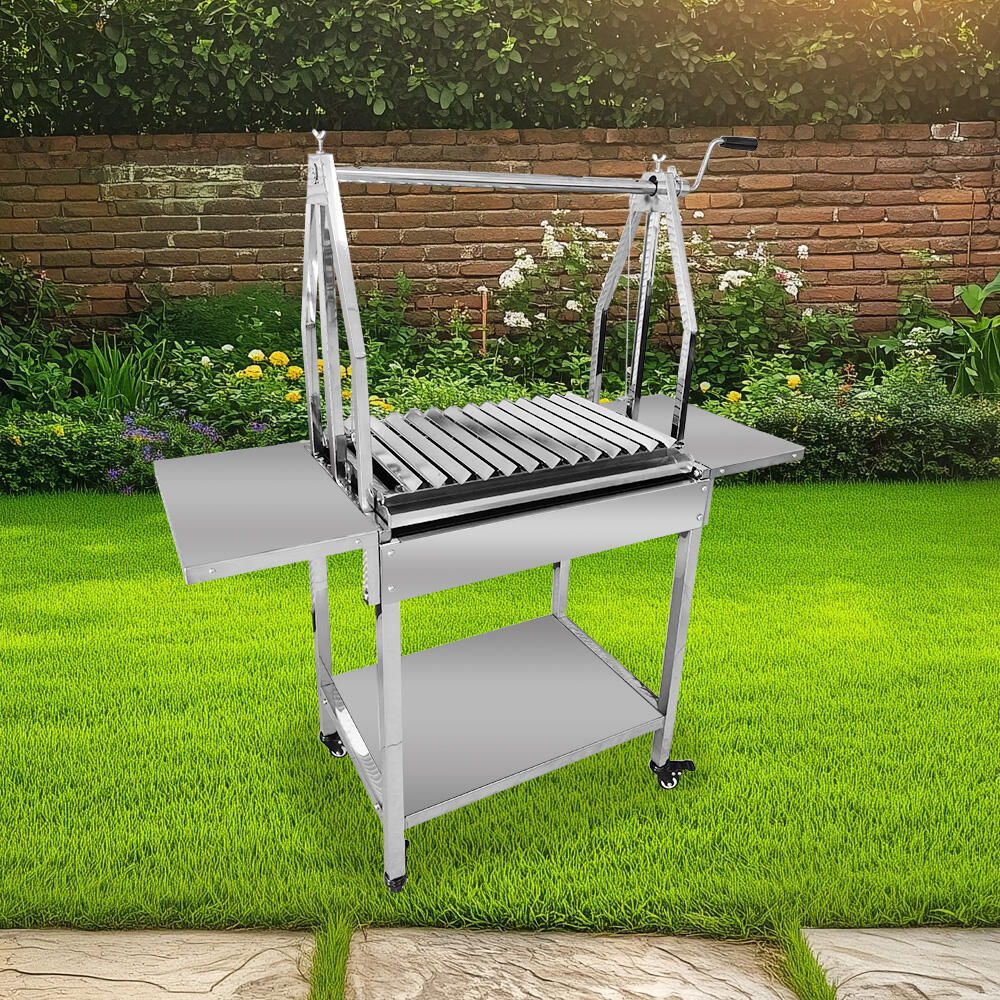Understanding the Essence of Argentine Parrilla Grilling
The parrilla grill stands at the heart of Argentine cuisine, representing more than just a cooking method – it's a cultural institution that brings families and friends together. This traditional grilling technique has been perfected over generations, creating a unique approach to barbecuing that emphasizes simplicity, quality ingredients, and masterful fire control. The distinctive V-shaped grates of a parrilla grill allow fat to drip away from the meat while retaining all the natural flavors that make Argentine barbecue world-renowned.
Unlike conventional grilling methods, the parrilla grill system relies on indirect heat and careful temperature management to achieve that perfect combination of smoky flavor and tender meat. The technique has gained international recognition for its ability to transform simple cuts of meat into culinary masterpieces, making it a must-learn skill for any serious barbecue enthusiast.
Essential Components of a Traditional Parrilla Setup
The Grill Structure and Materials
A proper parrilla grill consists of high-quality stainless steel or cast iron grates arranged in a V-shape pattern. This unique design channels away excess fat while preventing flare-ups that could compromise the meat's flavor. The grill should include an adjustable height mechanism to control the distance between the food and heat source, allowing for precise temperature control throughout the cooking process.
The firebox, typically positioned on one side of the grill, should be spacious enough to maintain a consistent fire while accommodating additional wood or charcoal as needed. Many traditional parrilla grills also feature a solid bottom plate that helps distribute heat evenly and collect drippings for easier cleanup.
Fuel Selection and Fire Management
The choice of fuel plays a crucial role in authentic parrilla grilling. Hardwood charcoal is the preferred option, producing intense heat and imparting a subtle smoky flavor that doesn't overpower the meat's natural taste. Some grillers combine charcoal with small hardwood pieces for additional flavor complexity.
Fire management requires constant attention and skill. The goal is to maintain a bed of hot embers rather than active flames, creating the perfect environment for slow, even cooking. This technique allows the meat to develop a beautiful crust while remaining juicy inside.
Mastering Temperature Control Techniques
Heat Zone Management
Creating and maintaining different temperature zones on your parrilla grill is essential for cooking various cuts of meat to perfection. The hottest zone, typically closest to the firebox, is ideal for searing and creating that characteristic crust on steaks. Medium-heat zones work well for larger cuts that require longer cooking times, while cooler areas serve as resting spots for finished items.
Understanding how to adjust the height of the grates and redistribute coals allows for precise temperature control. Experienced parrilla grillers develop an intuitive sense of heat management, often judging temperature by holding their hand over the grill at different heights.
Timing and Rotation Strategies
Proper timing and meat rotation are crucial elements of parrilla grilling success. Each cut requires different handling: thinner cuts might need quick searing, while thicker pieces benefit from slower cooking with periodic rotation to ensure even doneness. Learning to read the meat's appearance and feel helps determine the perfect moment for flipping or adjusting position.
The key is patience – rushing the process can result in uneven cooking or dried-out meat. Developing a sense of timing comes with practice and observation, as different cuts and thicknesses require varying approaches to achieve optimal results.

Selecting and Preparing Meat for the Parrilla
Quality and Cut Selection
The success of parrilla grilling begins with choosing the right cuts of meat. Traditional Argentine cuts like asado (ribs), vacío (flank), and bife de chorizo (sirloin strip) are popular choices. Look for well-marbled meat with a healthy fat content, as this contributes to flavor and prevents the meat from drying out during cooking.
Room temperature meat is essential for even cooking. Remove cuts from refrigeration at least an hour before grilling, allowing them to warm up gradually. This practice ensures more even heat distribution and better results on the parrilla grill.
Seasoning Philosophy
Traditional Argentine parrilla grilling emphasizes the natural flavors of the meat, using minimal seasoning. Coarse salt is the primary seasoning, applied generously just before cooking. Some cuts benefit from a light coating of olive oil to promote better browning and prevent sticking to the grates.
Chimichurri sauce, while not applied during cooking, is the classic accompaniment to grilled meats. This vibrant mixture of herbs, garlic, oil, and vinegar complements the smoky flavors developed during grilling without overwhelming the meat's natural taste.
Common Mistakes to Avoid
Temperature Control Errors
One of the most frequent mistakes when using a parrilla grill is improper temperature management. Cooking with flames instead of embers can lead to burnt exteriors and raw interiors. Similarly, failing to maintain consistent heat throughout the cooking process can result in uneven doneness and compromised flavor.
Another common error is not allowing sufficient time for the grill to reach optimal temperature before cooking. Rushing this step can lead to poor searing and inadequate flavor development. Patience in building and maintaining the proper heat level is crucial for success.
Handling and Timing Issues
Over-flipping or constantly moving the meat can prevent proper crust formation and interrupt the cooking process. The art of parrilla grilling requires restraint – allowing the meat to develop a proper sear before the first flip. Additionally, cutting into the meat too soon after cooking can cause juices to escape, resulting in drier meat.
Timing mistakes often occur when cooking multiple items simultaneously. Different cuts require different cooking times and temperatures, making it essential to plan the grilling sequence carefully to ensure all items finish at the appropriate time.
Frequently Asked Questions
What makes a parrilla grill different from regular BBQ grills?
A parrilla grill features V-shaped grates that channel fat away from the meat and heat source, preventing flare-ups. The adjustable height mechanism and emphasis on indirect heat cooking distinguish it from conventional grills, allowing for more precise temperature control and even cooking.
How long should I let the grill heat up before cooking?
Allow at least 30-45 minutes for the charcoal to turn into proper embers before cooking. The grill should reach a consistent temperature with no active flames visible, just a bed of hot coals ready for cooking.
What's the best way to clean and maintain a parrilla grill?
Clean the grates thoroughly after each use while still warm, using a wire brush to remove food residue. Regularly remove ash and grease from the collection tray, and protect the grill from elements when not in use. Periodic oiling of the grates helps prevent rust and maintains their non-stick properties.

